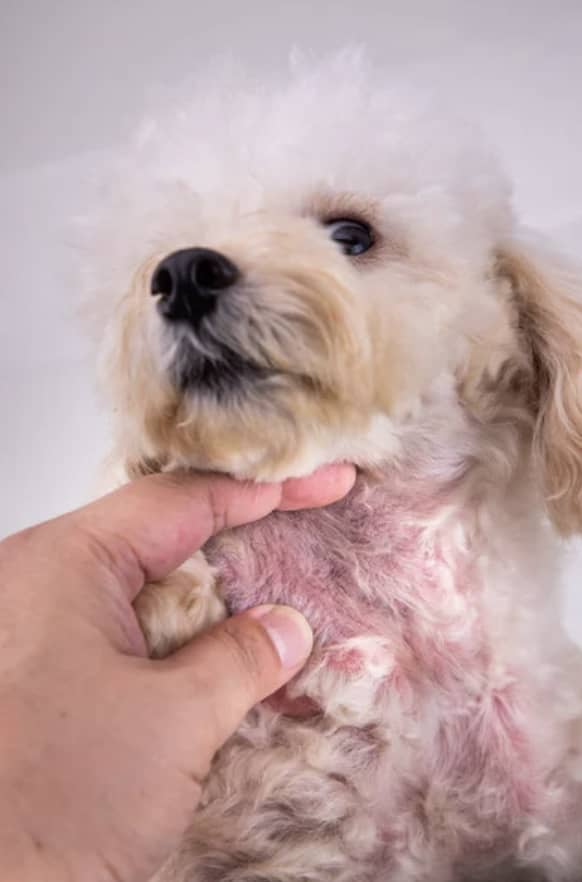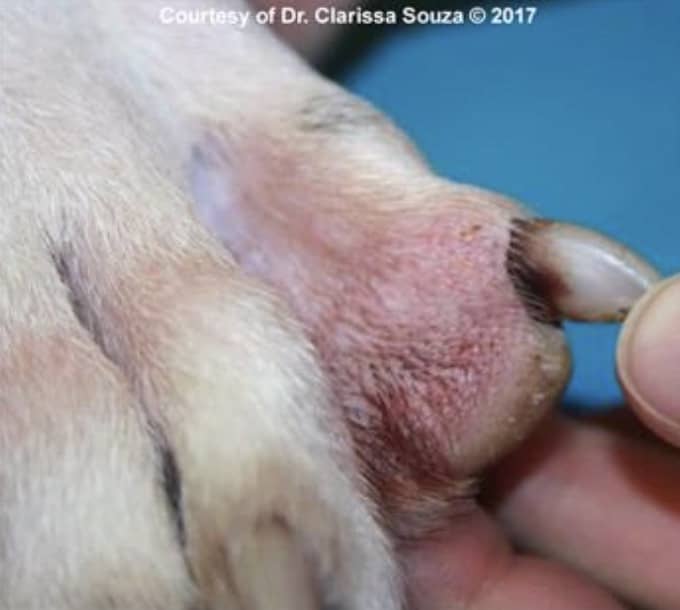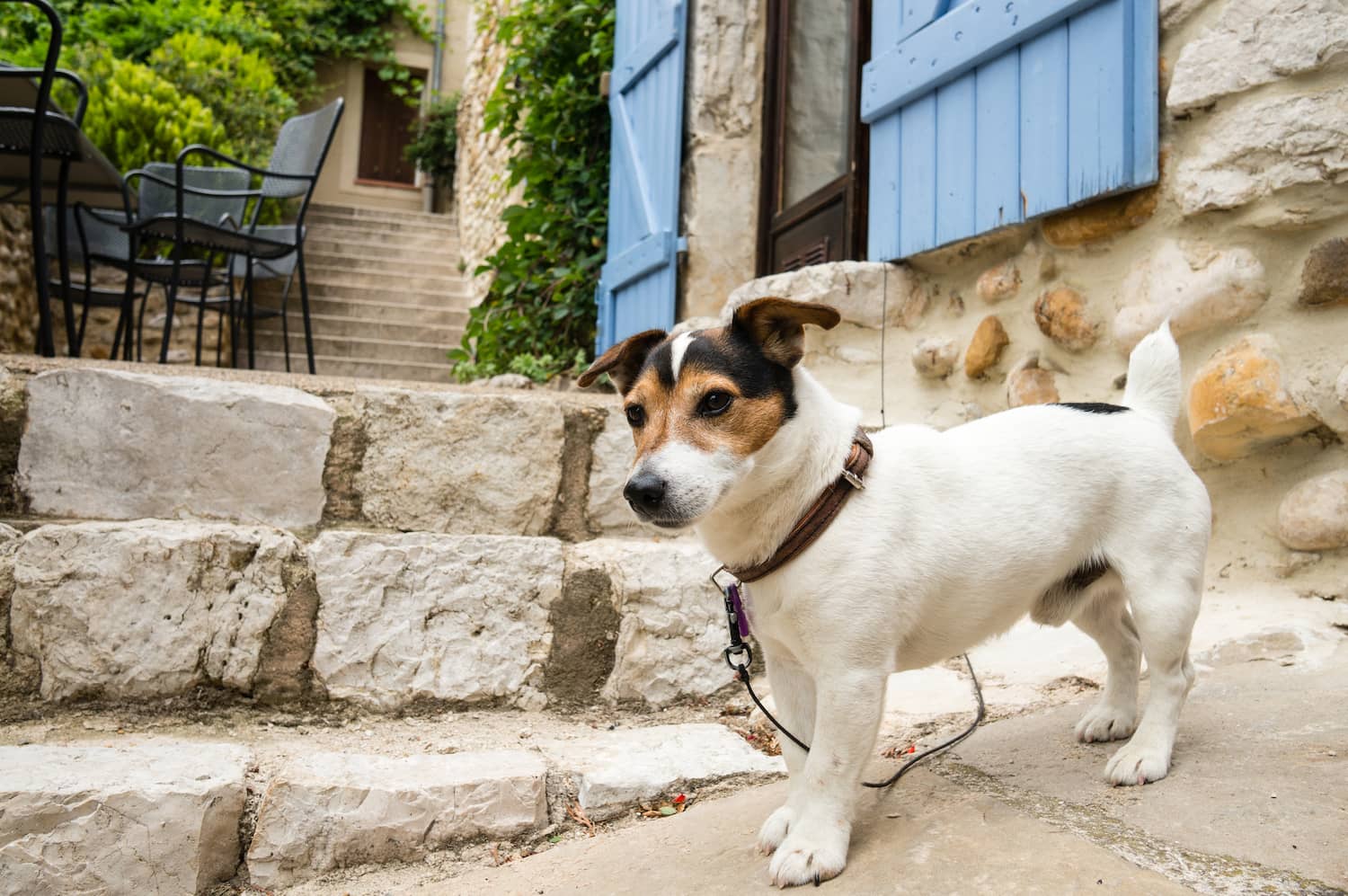If you're a dog owner, you know that your furry friend can sometimes get the odd infection. But did you know that yeast infections on dogs skin are relatively common? In this blog post, we'll discuss what yeast infections are, how to recognize the symptoms, and most importantly, how to treat them. So if your dog is scratching more than usual or seems to have irritated skin, read for some helpful advice.
What are yeast infections on dogs skin?
Yeast infections on dogs skin are caused by a yeast called Malassezia, which is technically a fungus. This yeast organism is actually present on all dogs' skin, but it only causes problems when the skin's natural balance is disrupted. Yeast infections in dogs can be very frustrating for both dog and owner, as they can be difficult to get rid of and can cause a lot of discomfort for your dog.
This yeast lives in the top layer of a dog's skin and produces antigens (substances that trigger an immune response). These antigens can cause the skin to become inflamed, and itchy, and damage the epidermis (outer layer of the skin). Additionally, some dogs have an inherited hypersensitivity to Malassezia, which can make the yeast infection even more uncomfortable.
What causes yeast infections on dogs skin?
There are a few different things that can cause yeast infections on dogs skin. One of the most common is allergies or allergic dermatitis. Dogs can be allergic to anything from pollen to food, and when their skin comes into contact with an allergen, it can disrupt the natural balance of yeast on their skin. This can cause yeast overgrowth and result in an infection.
Other common causes of yeast infections in dogs include:
- Autoimmune disease
- Hormonal imbalances
- Stress
- Excessive washing or grooming
- Use of topical steroids
What are the symptoms of a yeast infection in dogs?
Malassezia dermatitis in dogs can present as localized or generalized lesions and is also called yeast dermatitis. They are typically characterized by erythema (redness), scaling, and/or greasy exudation (oozing). In chronic cases, lichenification (thickening of the skin) and hyperpigmentation (darkening of the skin) also develop. Pruritus (itching) is often the most distressing symptom for dog owners.



Yeast infections in dogs can cause a lot of itchiness and discomfort for your furry friend. If you notice that your dog is scratching more than usual, or seems to have irritated skin, these could be signs of a yeast infection. Other common symptoms include:
- Dull coat
- Flaky skin
- Red skin
- Greasy or oily skin
- Brown or yellow patches on the skin
- Bad odor
If you notice any of these symptoms, it's important to take your dog to your veterinarian so they can get proper treatment.
How are yeast infections on dogs skin diagnosed?
If your veterinarian suspects a yeast infection, they will perform a detailed dermatological examination. Cytology is the best test available to diagnose a yeast infection on dogs skin. This involves looking at a skin sample under a microscope to look for yeast organisms. Your veterinarian may also recommend skin scrapings, fungal cultures, or biopsies to help identify the cause of your dog's yeast infection.
What are the treatment options for yeast infection in dogs?
Treatment options for a yeast infection on dogs skin include systemic and topical therapeutic options.
Topical Therapy - Topical therapy is very beneficial for areas of the skin and paws that are affected by yeast. This therapy helps to soothe the skin and also has anti-fungal properties.
Various topical agents have been effective in the treatment of yeast infections, including:
- Antifungal shampoos
- Antifungal sprays
- Antifungal wipes
- Topical antifungal creams or ointments
Systemic Therapy - Systemic therapy is used to treat yeast infections that are more widespread or severe. This type of therapy helps to target the yeast infection from the inside out.
Oral antifungal medications are typically used to treat systemic yeast infections. These include:
- Ketoconazole
- Itraconazole
- Fluconazole
Systemic therapy is typically reserved for more severe generalized cases of yeast infection, or for yeast infections that do not respond to topical therapy.
How can I prevent yeast infections on dogs skin?
The best way to prevent yeast infections in dogs is to maintain good hygiene and groom your dog regularly. You should also avoid using any topical steroids on your dog's skin unless prescribed by your veterinarian. If your dog has a yeast infection, it's important to treat it promptly to prevent it from spreading or getting worse. Yeast infections are uncomfortable for your dog and can be difficult to treat, so it's best to prevent them if possible.
As yeast loves moisture and infections typically affect skin folds and between the toes, it is good practice to clean those areas daily in susceptible dogs.
Are there any breeds that are susceptible to yeast infections?
There are several breeds of dogs that are more susceptible to yeast infections, including West Highland white terriers, basset hounds, bulldogs, dachshunds, cocker spaniels, shih tzus, English setters, poodles, and German shepherd dogs. The greater frequency of these conditions in certain breeds may be due to a genetic predisposition towards Malassezia dermatitis or because they are more likely to suffer from atopic dermatitis and/or seborrheic diseases.
Are yeast infections in dogs contagious?
As Malassezia is a normal inhabitant of the skin of both humans and animals and yeast infections in dogs are not considered to be contagious. When a dog has a yeast infection, it is more of an overgrowth of normally occurring yeast organisms such as Malassezia that are already present.
Are yeast infections in dogs painful?
Yeast infections in dogs are not typically painful, but they can be very uncomfortable for the dog. Yeast infections can make your dog's skin itch and they may scratch or lick at their skin excessively. This can lead to secondary bacterial infections, hot spots, and hair loss. Yeast infections can also make your dog's skin smell bad.
In conclusion, yeast infections on dogs skin can be uncomfortable and difficult to treat. It is important to take your dog to the veterinarian if you notice any symptoms of a yeast infection. Treatment options include topical and systemic therapy. You can help prevent yeast infections by maintaining good hygiene and grooming your dog regularly. Please contact your veterinarian if you have any further questions or are concerned that your dog may be suffering from a yeast infection.


